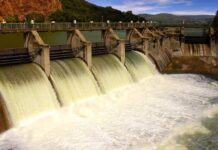Research being carried out at a unique environmental simulator in Hull could inform the design and deployment of tidal turbines.
The EPSRC-funded project will aim at solutions that find a compromise between energy generating efficiency and environmental impact in terms of turbulence and sediment motion. Tidal turbines apply roughly the same principles as wind turbines but using the more predictable and larger energy density of tide flows.
However, it is known that flow passing by tidal turbines support structures combined with the rotation of the turbine rotors produces a turbulent downstream wake that can impact the stability of sediments.
Because of knowledge gaps in predicting the sea-bed response, developers of tidal projects have to carry out costly environmental monitoring programmes in order to obtain environmental permission.
Hull University currently runs a ‘total environment simulator’ at The Deep public aquarium on the Humberside coast. It contains a unique flume facility 16m in length, 6m wide and 1.6m deep, in which powerful pumps generate a flow rate of 1m3 per second. It also has the capability to generate waves of different frequencies and directions that can overlap in a random fashion.
The facility has in the past tested the generating capacity of a range of wave and tidal devices; however, in addition to this, the latest project will assess environmental impact. The team, which includes academics from the geography and engineering departments, will analyse sediment behaviour using a range of advanced techniques, including laser Doppler emission.
‘The question is: is it possible to modify the construction of this type of turbine to minimise environmental impact?’ lead engineer Sergei Lukaschuk of Hull told The Engineer. ‘One of the targets of this work will be to make recommendations for manufacturers. There should be some kind of compromise between efficiency and environmental impact.’
A complicating factor is that areas with strong tidal currents — where turbines are usually placed — are subject to complex sediment transport dynamics. The cumulative, interactive effect of multiple turbines may confound this further.
‘At the end of the this work, a great result would be some numerical system that can predict the characteristics of sediment distribution due to tidal turbines,’ Lukaschuk said. ‘You cannot really experiment for each configuration of tide turbine array, but if you have some numerical mode this will allow you to predict environmental impact.’











































